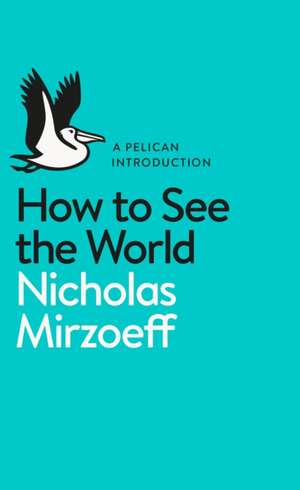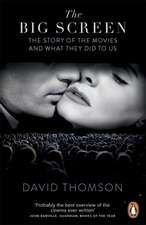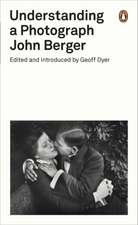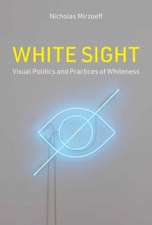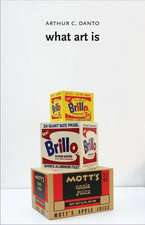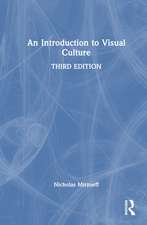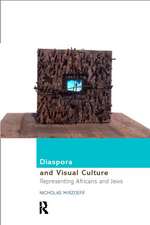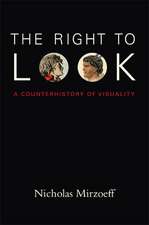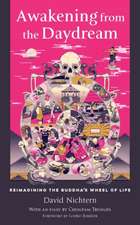How to See the World: Pelican Books
Autor Nicholas Mirzoeffen Limba Engleză Paperback – 3 iun 2015
Nicholas Mirzoeff is a leading figure in the field of visual culture, which aims to make sense of this extraordinary explosion of visual experiences. As Mirzoeff reminds us, this is not the first visual revolution; the 19th century saw the invention of film, photography and x-rays, and the development of maps, microscopes and telescopes made the 17th century an era of visual discovery. But the sheer quantity of images produced on the internet today has no parallels.
In the first book to define visual culture for the general reader, Mirzoeff draws on art history, theory and everyday experience to provide an engaging and accessible overview of how visual materials shape and define our lives.
| Toate formatele și edițiile | Preț | Express |
|---|---|---|
| Paperback (1) | 57.87 lei 25-31 zile | +19.96 lei 6-12 zile |
| Penguin Books – 3 iun 2015 | 57.87 lei 25-31 zile | +19.96 lei 6-12 zile |
| Hardback (1) | 307.02 lei 43-57 zile | |
| BASIC BOOKS – 11 apr 2016 | 307.02 lei 43-57 zile |
Din seria Pelican Books
-
 Preț: 82.44 lei
Preț: 82.44 lei - 16%
 Preț: 58.85 lei
Preț: 58.85 lei - 17%
 Preț: 57.40 lei
Preț: 57.40 lei - 17%
 Preț: 57.80 lei
Preț: 57.80 lei - 16%
 Preț: 53.42 lei
Preț: 53.42 lei - 28%
 Preț: 60.02 lei
Preț: 60.02 lei - 16%
 Preț: 58.97 lei
Preț: 58.97 lei - 17%
 Preț: 57.39 lei
Preț: 57.39 lei - 17%
 Preț: 52.43 lei
Preț: 52.43 lei - 18%
 Preț: 56.71 lei
Preț: 56.71 lei - 16%
 Preț: 69.34 lei
Preț: 69.34 lei - 16%
 Preț: 58.12 lei
Preț: 58.12 lei - 16%
 Preț: 69.51 lei
Preț: 69.51 lei - 16%
 Preț: 58.18 lei
Preț: 58.18 lei - 16%
 Preț: 58.76 lei
Preț: 58.76 lei - 16%
 Preț: 80.51 lei
Preț: 80.51 lei - 16%
 Preț: 69.91 lei
Preț: 69.91 lei - 16%
 Preț: 53.42 lei
Preț: 53.42 lei - 16%
 Preț: 58.81 lei
Preț: 58.81 lei - 33%
 Preț: 50.42 lei
Preț: 50.42 lei - 33%
 Preț: 50.06 lei
Preț: 50.06 lei - 16%
 Preț: 69.26 lei
Preț: 69.26 lei - 16%
 Preț: 58.32 lei
Preț: 58.32 lei - 16%
 Preț: 68.72 lei
Preț: 68.72 lei - 16%
 Preț: 58.50 lei
Preț: 58.50 lei - 16%
 Preț: 58.40 lei
Preț: 58.40 lei - 19%
 Preț: 57.42 lei
Preț: 57.42 lei - 17%
 Preț: 57.36 lei
Preț: 57.36 lei - 21%
 Preț: 133.01 lei
Preț: 133.01 lei - 17%
 Preț: 57.94 lei
Preț: 57.94 lei - 17%
 Preț: 57.78 lei
Preț: 57.78 lei - 27%
 Preț: 69.83 lei
Preț: 69.83 lei - 17%
 Preț: 56.98 lei
Preț: 56.98 lei - 22%
 Preț: 130.34 lei
Preț: 130.34 lei - 17%
 Preț: 57.93 lei
Preț: 57.93 lei - 16%
 Preț: 69.06 lei
Preț: 69.06 lei - 18%
 Preț: 50.78 lei
Preț: 50.78 lei - 22%
 Preț: 130.65 lei
Preț: 130.65 lei - 16%
 Preț: 117.52 lei
Preț: 117.52 lei - 17%
 Preț: 58.03 lei
Preț: 58.03 lei -
 Preț: 69.94 lei
Preț: 69.94 lei - 16%
 Preț: 68.94 lei
Preț: 68.94 lei - 21%
 Preț: 55.83 lei
Preț: 55.83 lei -
 Preț: 126.65 lei
Preț: 126.65 lei
Preț: 57.87 lei
Preț vechi: 69.42 lei
-17% Nou
11.08€ • 12.04$ • 9.31£
Carte disponibilă
Livrare economică 03-09 aprilie
Livrare express 15-21 martie pentru 29.95 lei
Specificații
ISBN-10: 014197740X
Pagini: 352
Dimensiuni: 111 x 181 x 20 mm
Greutate: 0.2 kg
Editura: Penguin Books
Colecția Pelican
Seria Pelican Books
Locul publicării:London, United Kingdom
Notă biografică
Nicholas Mirzoeff is Professor of Media, Culture and Communication at New York University. His book Watching Babylon, about the Iraq war as seen on TV and in film, was described by art historian Terry Smith as 'a tour de force by perhaps the most inventive - certainly the most wide-ranging - practitioner of visual culture analysis in the world today.'
Recenzii
Deploying a blend of semiotics, sociology, and art history, Mirzoeff shows us how to interpret everything from old masters to selfies, from Rashomon to a map of the Mississippi. Mirzoeff says he owes much of his approach to John Berger, and this is evident in the way he argues how inevitably political visual images are... Mirzoeff draws on theorists such as Benjamin, Foucault, and Deleuze, but thankfully is much clearer and easier to read than any of those writers
Descriere
In recent decades, we have witnessed an explosion in the number of visual images we encounter, as our lives have become increasingly saturated with screens. From Google Images to Instagram, video games to installation art, this transformation is confusing, liberating and worrying all at once, since observing the new visuality of culture is not the same as understanding it.
Nicholas Mirzoeff is a leading figure in the field of visual culture, which aims to make sense of this extraordinary explosion of visual experiences. As Mirzoeff reminds us, this is not the first visual revolution; the 19th century saw the invention of film, photography and x-rays, and the development of maps, microscopes and telescopes made the 17th century an era of visual discovery. But the sheer quantity of images produced on the internet today has no parallels.
In the first book to define visual culture for the general reader, Mirzoeff draws on art history, theory and everyday experience to provide an engaging and accessible overview of how visual materials shape and define our lives.
